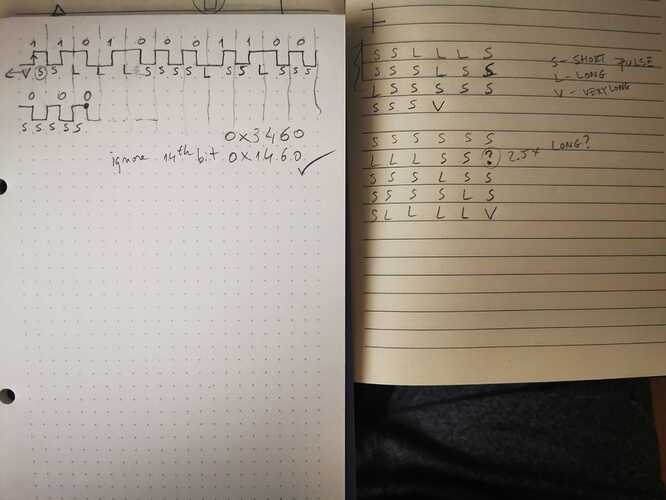The one that you linked is the best fit.
Yes and it takes time.
Ok so you’ve helped me a lot here and passed along an existing config and it picks up right where it left, this is helpful. The following command successfully recorded 2 more keys in the same file!
$ irrecord -d /dev/lirc0 --driver=default --update --loglevel=notice ./marantz-rc003pmcd.conf
Using driver default on device /dev/lirc0
irrecord - application for recording IR-codes for usage with lirc
Copyright (C) 1998,1999 Christoph Bartelmus(lirc@bartelmus.de)
This program will record the signals from your remote control
and create a config file for lircd.
A proper config file for lircd is maybe the most vital part of this
package, so you should invest some time to create a working config
file. Although I put a good deal of effort in this program it is often
not possible to automatically recognize all features of a remote
control. Often short-comings of the receiver hardware make it nearly
impossible. If you have problems to create a config file READ THE
DOCUMENTATION at https://sf.net/p/lirc-remotes/wiki
If there already is a remote control of the same brand available at
http://sf.net/p/lirc-remotes you might want to try using such a
remote as a template. The config files already contains all
parameters of the protocol used by remotes of a certain brand and
knowing these parameters makes the job of this program much
easier. There are also template files for the most common protocols
available. Templates can be downloaded using irdb-get(1). You use a
template file by providing the path of the file as a command line
parameter.
Please take the time to finish the file as described in
https://sourceforge.net/p/lirc-remotes/wiki/Checklist/ an send it
to <lirc@bartelmus.de> so it can be made available to others.
Press RETURN to continue.
Checking for ambient light creating too much disturbances.
Please don't press any buttons, just wait a few seconds...
No significant noise (received 0 bytes)
Signals are biphase encoded.
Signal length is 13
RC5 encoding
Please enter the name for the next button (press <ENTER> to finish recording)
KEY_VOLUMEUP
Now hold down button "KEY_VOLUMEUP".
Please enter the name for the next button (press <ENTER> to finish recording)
KEY_VOLUMEDOWN
Now hold down button "KEY_VOLUMEDOWN".
Please enter the name for the next button (press <ENTER> to finish recording)
Successfully written config file ./marantz-rc003pmcd.conf
Saving old config file in ./marantz-rc003pmcd.conf.bak
Ok so if others would find this interesting, I was able to find why irrecord errors out with some keys! It’s not irrecord’s fault, it’s the way the remote is designed.
I’ve used this command to get the RC5 pulse times for the Volume Up button:
mode2 -d /dev/lirc0 --driver default -m
volume up
16777215
877 892 1767 1788 1742 955
882 868 858 1808 742 1038
1773 894 930 872 856 921
869 883 913 90364
Which I then coded for easier reading as S - Short, L - Long Pulse on a piece of paper (right notebook, top sequence).
Then I manually recomposed the “waveform” using that sequence (left notebook) and interpretted the bits and I got 0x1460 which is indeed the code for Volume Up.
Now, I used the same mode2 command to get the rc5 pulse sequence for a special key on my remote that makes irrecord to print those errors.
$ mode2 -d /dev/lirc0 --driver default -m
Using driver default on device /dev/lirc0
Trying device: /dev/lirc0
Using device: /dev/lirc0
16777215
848 1002 774 925 883 895
1768 1818 1713 929 856 4486
885 894 854 1790 821 949
909 894 857 896 1767 938
847 1804 1744 1814 1687 76182
I’ve coded this on the same right notebook with S and L and one pulse it’s weird, last column of second row. I think this is a very non-standard pulse by rc5 means so I think I might need to somehow record these keys differently, maybe in some sort of a raw mode. I hope irrecord lets me do that, but I think I’m in luck coz I saw some config files in some sort of a raw mode, I just need to understand how to use it.

